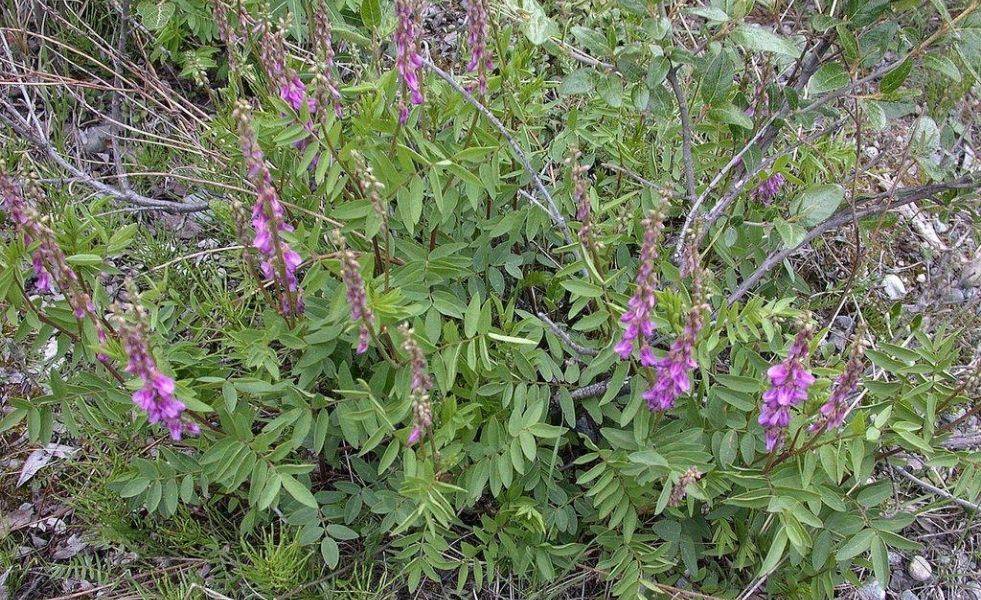Alpine Sweetvetch
Also called Alpine potato
- Iñupiaq name: Masu or Masuqutaq
- Family: Fabaceae
- Scientific name: Hedysarum alpinum
- Distinguishing characteristics: Plant growing 1-2 feet in height from horizontal root. Leaves smooth on top with conspicuous veins underneath. Pods are smooth, small, and net-viened. Flower stalks are tall with long clusters of pink or purple flowers near the top.
- Similar species: Alpine sweetvetch can be confused with other members of the Fabaceae family. Wild sweet pea, a poisonous plant and member of the Fabaceae, has a nearly identical growth form and very similar flowers. So how do we tell them apart? The flowers of Alpine sweetvetch are small and light pink in comparison to sweet pea, which has larger, red-purple flowers. Alpine sweetvetch has leaves with very distinct veins, while wild sweet pea has smooth leaves with small white hairs on their underside.
- Habitat: Dry, rocky tundra.
- Best time to harvest: September
- Uses: Roots eaten raw or boiled in water and mixed in soup.
BEWARE, this plant is similar to wild sweet pea (H. mackenzii) which has larger, reddish-purple flowers , hairy pods and leaves with whitish, fuzzy undersides. H. mackenzii can be toxic and cause severe digestive problems. It is speculated that Chris McCandless, the subject of Jon Krakauer’s novel “Into the Wild” died of paralysis following ingestion of wild sweet pea seeds.

Photo by Betsey Crawford

Photo by Karel Bergmann

Photo by Corey Gucker, USDA Forest Service
